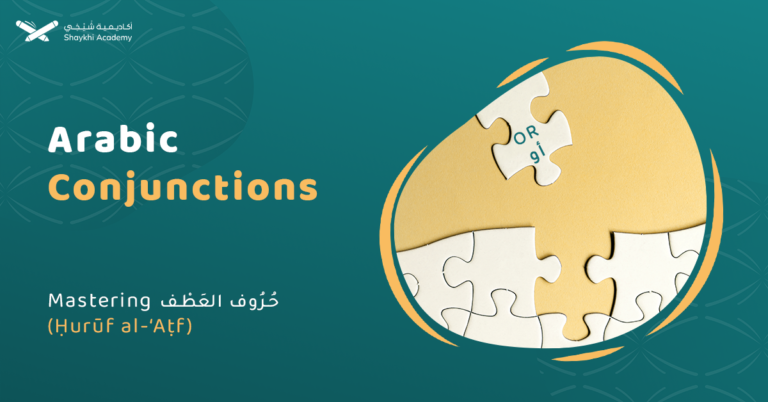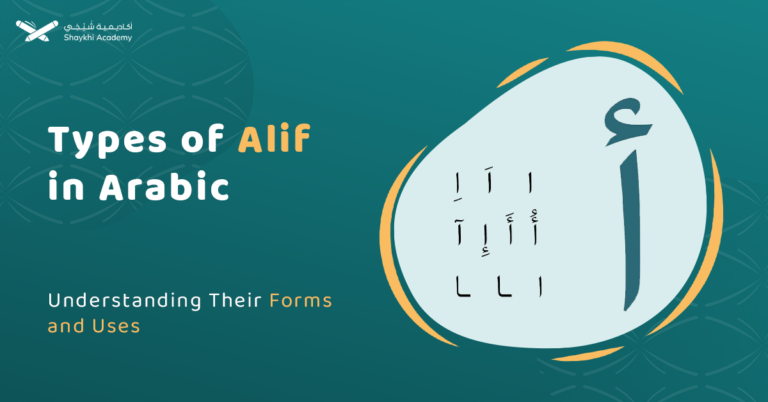Idgham with Ghunnah involves merging a letter with a nasal sound, primarily using “ي” (ya), “ن” (noon), “م” (meem), and “و” (waw), adding a resonant quality to the recitation. In contrast, Idgham without Ghunnah merges letters without a nasal sound, using “ر” (ra) and “ل” (lam), ensuring a clear and distinct pronunciation without nasal resonance. Both types enhance the fluency and harmony of Quranic recitation by facilitating smooth transitions between specific letters.
In the study of Tajweed, the art of reciting the Quran with proper pronunciation and intonation, various rules are employed to ensure the correct pronunciation of letters and words. One of these rules is “Idgham” which means merging or assimilating. In this article, we will explore Idgham in detail, focusing on Idgham with Ghunnah and Idgham without Ghunnah. We will look into their meanings, examples, and specific letters involved in each type.
What is Idgham?
Idgham is a fundamental rule. The term “Idgham” comes from the Arabic word “إدغام” which means “to merge” or “to assimilate.” It refers to the merging of one letter into another, such that the two letters are pronounced as a single, continuous sound. This rule applies particularly when certain letters follow each other, creating a smooth and fluent recitation.
Idgham occurs when a noon saakinah (نْ) or a tanween (ــًـٍـٌ) is followed by one of the specific letters that cause assimilation. There are two main types of Idgham: Idgham with Ghunnah (nasalization) and Idgham without Ghunnah (without nasalization).
Imagine two neighboring Lego bricks. In normal pronunciation, each letter in the Quran is pronounced distinctly, like separate Lego bricks. Idgham, however, is like gently pushing two Lego bricks together to create a seamless connection. This connection creates a smoother and more melodious recitation.
Types of Idgham
There are different types of Idgham, but we’ll focus on two main ones:
Idgham with Ghunnah ( إدغام بغنة ):
Here, the “n” sound is assimilated with a following consonant, accompanied by a nasal resonance (like a soft hum) for a longer duration.
Idgham without Ghunnah ( إدغام بغير غنّة ):
Similar to the previous one, the “n” sound merges with the following consonant, but without the nasal resonance.
Let’s explore these concepts further with some letters and examples.
What Does Ghunnah Mean?
Ghunnah, in the context of Tajweed, refers to the nasalization or nasal resonance produced during the pronunciation of certain Arabic letters. When a letter with a sukoon
(a diacritical mark indicating the absence of a vowel sound) is followed by one of the letters that cause nasal assimilation (such as “ي” (ya), “ن” (noon), “م” (meem), or “و” (waw)), a nasal sound is added to the pronunciation, creating a characteristic resonance known as Ghunnah.
This nasal resonance typically occurs for a short duration (1 Second), adding depth and richness to the recitation of the Quran. Understanding the concept of Ghunnah and its temporal occurrence is essential for mastering Tajweed and achieving correct pronunciation and intonation while reciting the Quran.
What is Idgham With Ghunnah?
Idgham with Ghunnah refers to the merging of one letter into another with a nasal sound. This type of Idgham includes the characteristic nasalization, adding a resonant quality to the merged pronunciation.
Idgham With Ghunnah Letters
The letters involved in Idgham with Ghunnah are:
- ي (Ya)
- ن (Noon)
- م (Meem)
- و (Waw)
These letters are referred to as “Idgham With Ghunnah” letters.
Examples of Idgham With Ghunnah in the Holy Quran
Here are some examples of Idgham With Ghunnah in the Holy Quran:
Ayah: (وَجَعَلْنَا سِرَاجًا وَهَّاجًا )
Surah: An-Naba (78:13)
Translation: (wa ja’alna sirajan wahhaja)
Explanation: In this verse, the letter “و” (waw) in “وَهَّاجًا” comes after the tanween at the end of “سِرَاجًا”. The sound of the tanween (which resembles “an”) is merged into the “و” with a nasal sound, creating a smooth transition between the words.
Example 2:
Ayah: (جَزَاءً مِّن رَّبِّكَ عَطَاءً حِسَابًا )
Surah: An-Naba (78:36)
Translation: (jazaa’an mir rabbika ‘ata’an hisaba)
Explanation: In this example, the tanween in “جَزَاءً” is followed by the letter “م” (meem). The nasal sound (ghunnah) is applied, and the tanween merges into the “م”. The reader should emphasize the nasal sound, creating a continuous and fluent pronunciation.
Example 3:
Ayah: وَمِنَ النَّاسِ مَنْ يَقُولُ آمَنَّا بِاللَّـهِ وَبِالْيَوْمِ الْآخِرِ وَمَا هُمْ بِمُؤْمِنِينَ
Surah: Al-Baqarah (2:8)
Translation: (wa mina an-naasi man yaqulu aamannaa billaahi wa bil-yawmi al-aakhiri wa ma hum bimu’mineen)
Explanation: In this verse, the letter “ي” (ya) in “يَقُولُ” comes after the noon saakinah in “مَنْ”. The noon sound merges into the “ي” with a nasal sound, creating a smooth transition between the words.
Example 4
Ayah: (إِنَّ الَّذِينَ كَفَرُوا سَوَاءٌ عَلَيْهِمْ ءَأَنذَرْتَهُمْ أَمْ لَمْ تُنذِرْهُمْ لَا يُؤْمِنُونَ)
Surah: Al-Baqarah (2:6)
Translation: (inna alladhina kafaru sawa’un ‘alayhim a’anđartahum am lam tunđirhum la yu’minun)
Explanation: In this verse, the letter “ل” (lam) in “لَا” comes after the noon saakinah in “تُنذِرْهُمْ”. The noon sound merges into the “ل” with a nasal sound, creating a smooth transition between the words.
Example 5
Ayah: (فَإِن لَّمْ يَسْتَجِيبُوا لَكَ فَاعْلَمْ أَنَّمَا يَتَّبِعُونَ أَهْوَاءَهُمْ ۚ وَمَنْ أَضَلُّ مِمَّنِ اتَّبَعَ هَوَاهُ بِغَيْرِ هُدًى مِّنَ اللَّـهِ ۚ إِنَّ اللَّـهَ لَا يَهْدِي الْقَوْمَ الظَّالِمِينَ)
Surah: Al-Qasas (28:50)
Translation: (fa in lam yastajeebū laka fa’lam annamā yattabi’ūna ahwā’ahum waman ađallu mimmani ittaba’a hawāhu bighayri hudan mina Allāh ʾinnallāha lā yahdī l-qawma aż-żālimīn)
Explanation: In this verse, the letter “ل” (lam) in “لَّمْ” comes after the noon saakinah in “إِن”. The noon sound merges into the “ل” with a nasal sound, creating a seamless transition between the words.
| Type of Idgham | Letters | Example | Explanation | Surah | Ayah |
| Idgham With Ghunnah | ي (Ya), ن (Noon), | من يعمل | “ن” merges into “ي” with a nasal sound. | Al-Nis’a | 110 |
| Idgham With Ghunnah | م(Mem) , و (Waw) | من ولى | “ن” merges into “و” with a nasal sound. | Al-Baqarah | 107 |
| Idgham With Ghunnah | م (Mem) , ي (Ya) | من يأتيكم | “ن” merges into “ي” with a nasal sound. | Al-Mulk | 30 |
| Idgham With Ghunnah | ن (Non) , ي (Ya) | أن يصدكم | “ن” merges into “ص” with a nasal sound. | Sab’a | 34 |
Summary
Idgham with Ghunnah involves merging letters with a nasal sound. The key letters for Idgham with Ghunnah are “ي” (yaa), “ن” (noon), “م” (meem), and “و” (waw). This rule enhances the fluency and harmony of Quranic recitation by ensuring smooth transitions between specific letters. To master this rule and other Tajweed principles, consider enrolling in courses at reputable institutions like the Sheikhi Academy.
In these examples, the nasalization adds a resonant and continuous quality to the pronunciation.
What is Idgham Without Ghunnah?
Idgham without Ghunnah refers to the merging of one letter into another without a nasal sound. The word “Ghunnah” means nasalization or the nasal sound. In this type of Idgham, the nasal sound is not present.
When Idgham without Ghunnah occurs, the first letter is merged into the second letter, and the pronunciation becomes clear and distinct without any nasal sound.
Idgham Without Ghunnah Letters
The letters involved in Idgham without Ghunnah are:
- ر (Ra)
- ل (Lam)
These letters are referred to as “Idgham without Ghunnah” letters.
Examples of Idgham Without Ghunnah in the Holy Quran
Here are several examples of Idgham Without Ghunnah in the Holy Quran:
Example 1
Ayah: مَن لَّمْ يَذُقِ الْعَذَابَ
Surah: Al-Imran (3:182)
Translation: (man lam yadhuq al-azab)
Explanation: In this verse, the letter “ل” (lam) comes after the noon saakinah in “مَن”. The noon sound merges into the “ل” without a nasal sound, resulting in a smooth transition between the words.
Example 2
Ayah: مِن رَّبِّهِمْ
Surah: Al-Baqarah (2:5)
Translation: (min rabbihim)
Explanation: In this verse, the letter “ر” (ra) comes after the noon saakinah in “مِن”. The noon sound merges into the “ر” without a nasal sound, ensuring a seamless transition between the words.
Example 3
Ayah: إِن لَّمْ
Surah: Al-Baqarah (2:6)
Translation: (in lam)
Explanation: In this verse, the letter “ل” (lam) comes after the noon saakinah in “إِن”. The noon sound merges into the “ل” without a nasal sound, creating a continuous flow in the recitation.
Example 4
Ayah: فَمَنْ رَبُّكُمَا
Surah: Al-A’raf (7:123)
Translation: (fa man rabbukuma)
Explanation: In this verse, the letter “ر” (ra) comes after the noon saakinah in “فَمَنْ”. The noon sound merges into the “ر” without a nasal sound, providing a smooth connection between the words.
Example 5
Ayah: مَن لَدُن Surah: Al-Kahf (18:28) Translation: (man ladun)
Explanation: The “ن” in “مَن” is merged into the “ل” in “لَدُن” without a nasal sound, resulting in a clear and fluid pronunciation.
Example 6
Ayah: مَن رَحِمَ
Surah: Al-Kahf (18:32)
Translation: (man rahima)
Explanation: The “ن” in “مَن” is merged into the “ر” in “رَحِمَ” without a nasal sound, ensuring a seamless flow between the words.
Tables and Illustrations Idgham Without Ghunnah
| Type of Idgham | Letters | Example Word Pair | Explanation |
| Idgham Without Ghunnah | ر (Ra), ل (Lam) | مَن لَدُن (man ladun) | “ن” merges into “ل” without a nasal sound. |
| Idgham Without Ghunnah | ر (Ra), ل (Lam) | مَن رَحِمَ (man rahima) | “ن” merges into “ر” without a nasal sound. |
| Idgham With Ghunnah | ي (Ya), ن (Noon), م (Meem), و (Waw) | مَن يَعْمَلْ (man ya’mal) | “ن” merges into “ي” with a nasal sound. |
For beginners, this structured approach will help in understanding and practicing Idgham, an essential component of Tajweed.
Summary
Idgham without Ghunnah involves merging letters without a nasal sound. The key letters for Idgham without Ghunnah are “ل” (lam) and “ر” (ra). This rule enhances the fluency and harmony of Quranic recitation by ensuring smooth transitions between specific letters without the nasal resonance.
To master this rule and other Tajweed principles, consider enrolling in courses at reputable institutions like the Sheikhi Academy.
In these examples, the absence of nasalization ensures clarity and precision in the pronunciation.
Exceptions of Idgham with/without Ghunnah
In the recitation of the Quran, certain rules govern the pronunciation of noon saakinah (a noon with a sukoon) and tanween. These rules often involve assimilation, or merging, of sounds. However, there are notable exceptions to these rules. This discussion will explore both the typical assimilation rulns es and the specific instances where exceptioapply.
Exceptions to Assimilation Rules
There are specific cases where the standard rules of assimilation for noon saakinah and tanween do not apply. These exceptions must be noted to ensure correct recitation.
Izhar in Some Idgham Cases
Typically, idgham (merging) requires that the assimilated letter and the letter it merges into belong to different words. However, if these letters meet within a single word, assimilation must be pronounced distinctly. This distinct pronunciation is called “Izhar.” In the Quran, there are four instances where the noon saakinah meets one of the assimilated letters within a single word. These instances occur in the words دنيا (“dunya”), صنوان (“sunwan”), قنوان (“qunwan”), and بنيان (“bunyan”).
Specific Exemptions
- Verses with Continuous Recitation:
- In the verse ﴿يس * وَالْقُرْآنِ الْحَكِيمِ﴾ (“Yasin. Wal Quran El Hakim”) (Yasin 1-2), upon continuous recitation, Hafs assimilates the noon saakinah into the letter “seen.”
- Similarly, in the verse ﴿ن وَالْقَلَمِ وَمَا يَسْطُرُونَ﴾ (“Noon. Wal Qalam Wama Yasturoon”) (Al-Qalam 1), Hafs assimilates the noon into the letter “qalme.”
- Recitation of Initials:
- In the initials of Surahs Ash-Shu’ara and Al-Qasas, denoted as ﴿طسم﴾ (“Tasim”), Hafs assimilates the noon saakinah into the meem. This is an example of assimilation of the proximate.
- Stopping on Noon and Meem:
- In the verse ﴿وَقِيلَ مَنْ رَاقٍ﴾ (“Wa Qeel Marraq?”) (Al-Qiyamah 27), when there is a required pause on the noon of “man,” assimilation does not occur. Instead, the noon and meem with sukoon must be pronounced distinctly.
These exceptions highlight the nuanced rules of Quranic recitation, ensuring that each word and letter is articulated correctly and reverently.
Unlock the Beauty of Quranic Recitation with Sheikhi Academy’s Tajweed Courses
Sheikhi Academy offers comprehensive courses on Tajweed and Quranic recitation, taught by experienced instructors who are knowledgeable in the science of Tajweed.
Our courses are designed to cater to students of all levels, from beginners to advanced learners, providing a structured curriculum that covers the rules and principles of Tajweed in-depth.
Through interactive lessons and personalized feedback, students not only learn the theoretical aspects of Tajweed but also develop practical skills in recitation.
Check for example:
Whether you’re looking to improve your Quranic recitation or pursue a deeper understanding of Tajweed, Sheikhi Academy’s courses provide the perfect opportunity to enhance your proficiency and connect with the divine message of the Quran. Enroll now and embark on a journey of spiritual growth and mastery of the Quran!”
Why Choose Sheikhi Academy?
At Sheikhi Academy, we pride ourselves on offering top-notch Tajweed courses tailored to meet the needs of every student. Our instructors are not only experts in Tajweed but are also passionate about imparting their knowledge in a way that inspires and motivates learners.
With a focus on personalized learning and interactive teaching methods, Sheikhi Academy ensures that each student receives the attention and guidance they need to excel in their Quranic recitation journey.
Moreover, our flexible course options and convenient online platform make learning accessible from anywhere in the world. Whether you’re a beginner eager to start your Tajweed journey or an advanced learner seeking to refine your skills, Sheikhi Academy is your trusted partner in achieving your Quranic recitation goals.

Conclusion
By completing this article, we hope you have benefited from understanding the principles of Idgham with Ghunnah and without Ghunnah in the Tajweed of the Quran.
This knowledge enables you to have a deeper understanding of recitation and improve your abilities to recite the Quran correctly and beautifully.
We now encourage you to apply what you have learned by listening to Quranic verses and attempting to identify whether they contain Idgham with Ghunnah or without Ghunnah. These practical experiments allow you to refine your skills further and deepen your connection with the Quranic text.














































